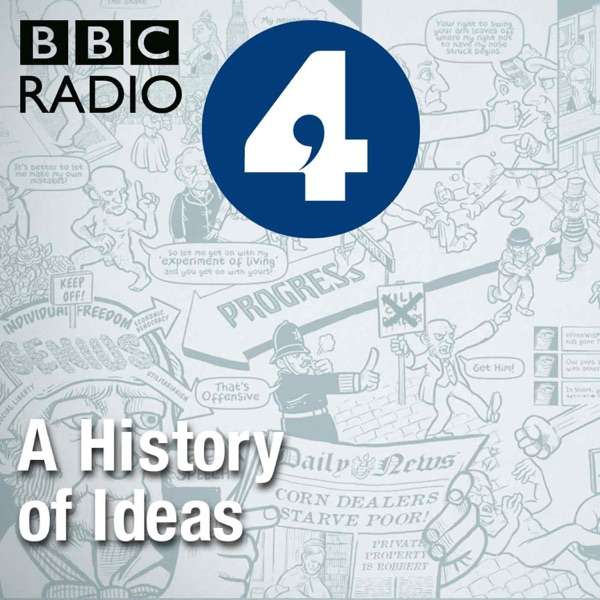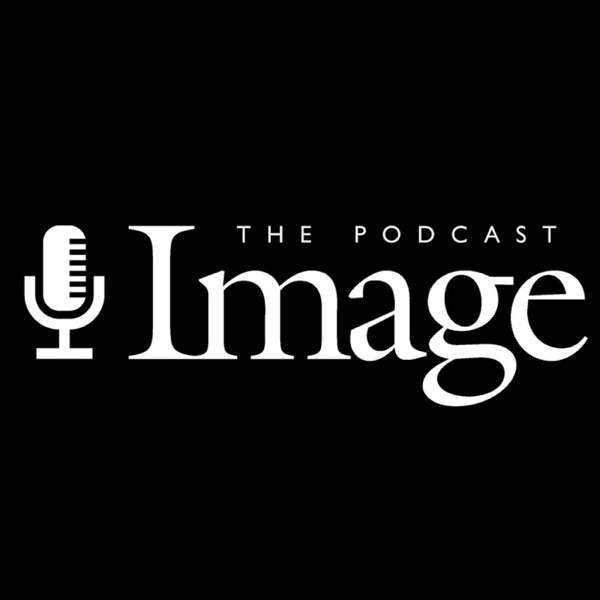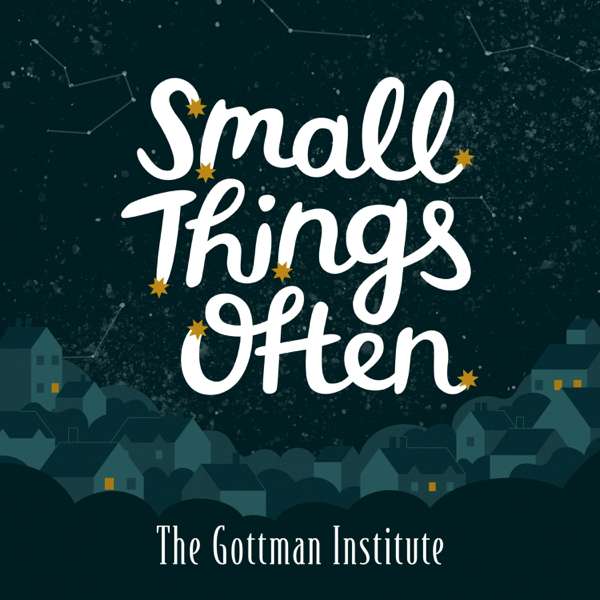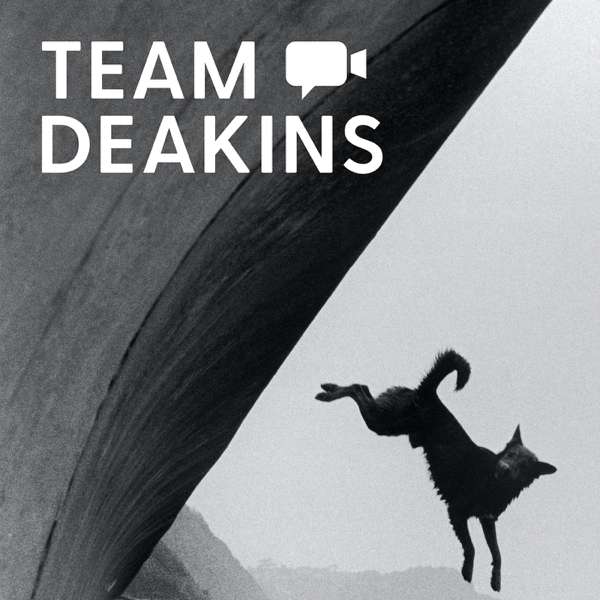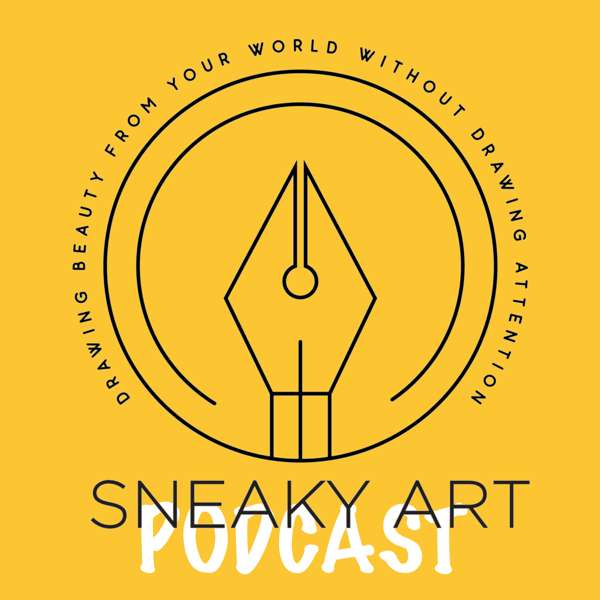Summary
In this episode of the Pain Exam Podcast, Dr. David Rosenblum provides a comprehensive review of herpes zoster and postherpetic neuralgia (PHN), focusing on pathophysiology, diagnosis, and treatment options. Dr. Rosenblum explains that postherpetic neuralgia affects approximately 25% of patients with acute herpes zoster, causing debilitating unilateral chronic pain in one or more dermatomes. He discusses the three phases of herpes zoster: acute (up to 30 days), subacute (up to 3 months), and postherpetic neuralgia (pain continuing beyond 3 months). Dr. Rosenblum identifies risk factors for developing PHN, including older age, female sex, immunosuppression, prodromal pain, severe rash, and greater acute pain severity. He details the pathophysiology involving peripheral and central sensitization, and explains different phenotypes of PHN that can guide treatment approaches. For treatment, Dr. Rosenblum reviews various options including antiviral medications (which should be started within 72 hours of onset), corticosteroids, opioids, antidepressants (particularly tricyclics and SNRIs), antiepileptics (gabapentin and pregabalin), topical agents (lidocaine and capsaicin), and interventional procedures such as epidural injections and pulsed radiofrequency. He emphasizes that prevention through vaccination with Shingrix is highly effective, with 97% effectiveness in preventing herpes zoster in patients 50-69 years old and 89% effectiveness in those over 70. Dr. Rosenblum mentions that he's currently treating a patient with trigeminal postherpetic neuralgia and is considering a topical sphenopalatine ganglion block as a minimally invasive intervention before attempting more invasive procedures.
Chapters Introduction to the Pain Exam Podcast and Topic Overview
Dr. David Rosenblum introduces the Pain Exam Podcast, mentioning that it covers painful disorders, alternative treatments, and practice management. He explains that this episode focuses on herpes zoster and postherpetic neuralgia as board preparation for fellows starting their programs, with ABA boards coming up in September. Dr. Rosenblum notes that he's not only preparing listeners for boards but also seeking the latest information to help treat his own patients with this notoriously difficult disease.
Upcoming Conferences and Educational Opportunities
Dr. Rosenblum announces several upcoming conferences including Aspen in July, Pain Week in September, and events with NYSIP and the Latin American Pain Society. He mentions he'll be teaching ultrasound and regenerative medicine at these events. Dr. Rosenblum invites listeners to sign up at nrappain.org to access a community discussing regenerative medicine, ultrasound-guided pain medicine, regional anesthesia, and board preparation. He also offers ultrasound training in New York and elsewhere, with upcoming sessions in Manhattan on July 12th and October 4th, plus private shadowing opportunities.
Overview of Postherpetic Neuralgia
Dr. Rosenblum defines postherpetic neuralgia as typically a unilateral chronic pain in one or more dermatomes after acute herpes zoster infection. He states that the incidence of acute herpes zoster ranges between 3-5 patients per thousand person-years, and one in four patients with acute herpes zoster-related pain will transition into postherpetic neuralgia. Dr. Rosenblum emphasizes that while this condition won't kill patients, it can be extremely debilitating and significantly reduce quality of life.
Treatment Options Overview
Dr. Rosenblum reviews treatment options according to the WHO pain ladder, including tricyclics like nortriptyline and antiepileptic drugs such as gabapentin. He explains that if pain is not significantly reduced, interventional treatments like epidural injections with local anesthetics and corticosteroids or pulsed radiofrequency of the dorsal root ganglion are options. For postherpetic neuralgia specifically, Dr. Rosenblum notes that preferred treatments include transdermal capsaicin, lidocaine, or oral drugs such as antidepressants or antiepileptics.
Phases of Herpes Zoster and Definitions
Dr. Rosenblum outlines the three phases during herpes zoster reactivation: acute herpes zoster-related pain (lasting maximum 30 days), subacute herpes zoster-related pain (pain after healing of vesicles but disappearing within 3 months), and postherpetic neuralgia (typically defined as pain continuing after 3 months). He mentions that acute herpes zoster pain often begins with prodromal pain starting a few days before the appearance of the rash.
Incidence and Risk Factors
Dr. Rosenblum states that the incidence of herpes zoster ranges between 3-5 patients per 1,000 person-years, with approximately 5-30% of cases leading to postherpetic neuralgia. He identifies risk factors including older age, female sex, immunosuppression, prodromal pain, severe rash, and greater acute pain severity. Dr. Rosenblum describes the clinical manifestations as a mosaic of somatosensory symptoms including burning, deep aching pain, tingling, itching, stabbing, often associated with tactile and cold allodynia.
Impact on Quality of Life
Dr. Rosenblum emphasizes that postherpetic neuralgia can be debilitating, impacting both physical and emotional functioning and causing decreased quality of life. He notes that it leads to fatigue, insomnia, depression, anorexia, anxiety, and emotional distress. Dr. Rosenblum stresses the importance of exploring methods for prevention of postherpetic neuralgia and optimizing pain treatment for both subacute herpes zoster-related pain and postherpetic neuralgia.
Literature Review and Pathophysiology
Dr. Rosenblum mentions that he's discussing a literature review from 2024 that updates previous practical guidelines published in 2011. He explains the pathophysiology of postherpetic neuralgia, which involves sensitization of peripheral and sensory nerves from damage. Dr. Rosenblum describes how inflammatory mediators reduce the stimulus threshold of nociceptors and increase responsiveness, resulting in pathological spontaneous discharges, lower thresholds for thermal and mechanical stimuli, and hyperalgesia.
Central Sensitization and Nerve Damage
Dr. Rosenblum explains that central sensitization results from peripheral nociceptor hyperactivity leading to plastic changes in the central nervous system, involving amplification of pain signals and reduced inhibition. He describes how nerve damage in postherpetic neuralgia patients results from neuronal death due to severe inflammatory stimuli or secondary to neuronal swelling. Dr. Rosenblum notes that motor defects occur in 0.05% of patients with herpes zoster, observed as abdominal pseudohernias or motor weakness of limbs limited to the affected myotome.
Different Phenotypes and Classification
Dr. Rosenblum discusses different phenotypes of postherpetic neuralgia and how phenotyping can determine treatment. He explains that there are several ways to classify the phenotypes, with one categorizing patients into three subtypes: sensory loss (most common), thermal gain, and thermal loss with mechanical gain. Dr. Rosenblum describes the mechanistic categorization, including the irritable nociceptive phenotype characterized by preserved sensation, profound dynamic mechanical allodynia, reduced pressure pain threshold, and relief with local anesthetic infiltration.
Deafferentation Phenotype
Dr. Rosenblum explains that a deafferentation phenotype may arise from destruction of neurons by the virus in the dorsal root ganglion. This phenotype is characterized by sensory loss, including thermal and vibratory sensation without prominent thermal allodynia. He notes that mechanical allodynia can occur secondary to A-beta fibers activating spinothalamic pathways (known as phenotypic switches), along with pressure hyperalgesia and temporal summation suggesting central sensitization. Dr. Rosenblum mentions that in one study, this phenotype was present in 10.8% of individuals, and for those with deafferentation pain, gabapentinoids, antidepressants, and neuromodulatory therapies like repetitive transcranial magnetic stimulation may be beneficial.
Diagnosis and Physical Examination
Dr. Rosenblum discusses the diagnosis of herpes zoster and postherpetic neuralgia, emphasizing the importance of physical examination. He explains that diagnosis is based on the rash, redness, papules, and vesicles in the painful dermatomes, with healing vesicles showing crust formation. Dr. Rosenblum notes that the rash is generally unilateral and does not cross the midline of the body. In postherpetic neuralgia patients, he mentions that scarring, hyper or hypopigmentation is often visible, with allodynia present in 45-75% of affected patients.
Sensory Testing and Assessment
Dr. Rosenblum explains that in patients with postherpetic neuralgia, a mosaic of somatosensory alterations can occur, manifesting as hyperalgesia, allodynia, and sensory loss. These can be quantified by quantitative sensory testing, which assesses somatosensory functions, dermal detection thresholds for perception of cold, warmth, and paradoxical heat sensations. He notes that testing can provide clues regarding underlying mechanisms of pain, impaired conditioned pain modulation, temporal summation suggesting central sensitization, and information about the type of nerve damage and surviving afferent neurons.
Prevention Through Vaccination
Dr. Rosenblum discusses prevention of acute herpes zoster through vaccination, noting that the risk increases with reduced immunity. He highlights studies evaluating Shingrix, a vaccine for herpes zoster, which showed 97% effectiveness in preventing herpes zoster in patients 50-69 years old with healthy immune systems and 89% effectiveness in patients over 70. Dr. Rosenblum states that Shingrix is 89-91% effective in preventing postherpetic neuralgia development in patients with healthy immune systems and 68-91% effective in those with weakened or underlying conditions.
Treatment Objectives
Dr. Rosenblum outlines the treatment objectives for herpes zoster and postherpetic neuralgia. For acute herpes zoster, objectives include relieving pain, reducing severity and duration of pain, accelerating recovery of epidermal defects, and preventing secondary infections. For postherpetic neuralgia, the objectives are pain alleviation and improved quality of life. Dr. Rosenblum lists available treatments including psychotherapy, opiates, antidepressants, antiepileptics, NMDA antagonists, topical agents, and interventional treatments such as epidurals, pulsed radiofrequency, nerve blocks, and spinal cord stimulation.
Antiviral Medications
Dr. Rosenblum emphasizes that antiviral drugs should be started within 72 hours of clinical onset, mentioning famciclovir, valacyclovir, and acyclovir. He notes there is no evidence for effectiveness after 72 hours in patients with uncomplicated herpes zoster. Dr. Rosenblum provides dosing information: for immunocompetent patients, famciclovir 500mg and valacyclovir 1000mg three times daily for seven days; for immunocompromised patients, famciclovir 1000mg three times daily for 10 days, while acyclovir should be given IV in the immunocompromised.
Benefits of Antiviral Therapy
Dr. Rosenblum explains that antiviral medication accelerates the disappearance of vesicles and crusts, promotes healing of skin lesions, and prevents new lesions from forming. By inhibiting viral replication, he notes that antiviral therapy likely reduces nerve damage, resulting in reduced incidence of postherpetic neuralgia, and should be started as soon as possible.
Corticosteroids and Opioids
Dr. Rosenblum discusses the use of corticosteroids, noting that when added to antiviral medications, they may reduce the severity of acute herpes zoster-related pain, though increased healing of skin lesions was not observed in one study. He mentions that a Cochrane review found oral corticosteroids ineffective in preventing postherpetic neuralgia. Regarding opioids, Dr. Rosenblum states they are commonly used alongside antivirals for controlling acute herpes zoster pain, with tramadol having a number needed to treat (NNT) of 4.7 and strong opioids having an NNT of 4.3 for 50% pain reduction.
Methadone and Antidepressants
Dr. Rosenblum discusses methadone as an NMDA receptor antagonist used in acute and chronic pain management, though he notes there are no randomized controlled trials determining its efficacy in acute herpes zoster pain or postherpetic neuralgia. He explains that methadone can modulate pain stimuli by inhibiting the uptake of norepinephrine and serotonin, resulting in decreased development of hyperalgesia and opioid tolerance, but has side effects including constipation, nausea, sedation, and QT prolongation that can trigger torsades de pointes. Dr. Rosenblum identifies antidepressants as first-line therapy for postherpetic neuralgia, including tricyclics and SNRIs, with tricyclics having an NNT of 3 and SNRIs an NNT of 6.4 for 50% pain reduction.
Antiepileptics and Pharmacological Treatment Summary
Dr. Rosenblum discusses antiepileptics like gabapentin and pregabalin for postherpetic neuralgia. He cites two trials measuring gabapentin's effect, concluding it was effective compared to placebo with a pooled NNT of 4.4, while pregabalin had an NNT of 4.9. Dr. Rosenblum summarizes that pharmacological treatment is well established for subacute herpes zoster pain, though new high-quality evidence has been lacking since the last update in 2011.
Topical Agents
Dr. Rosenblum discusses local anesthetic topical agents including lidocaine and capsaicin creams and patches. He notes that 8% capsaicin provided significant pain reduction during 2-8 weeks, while 5% lidocaine patches provided moderate pain relief after eight weeks of treatment. Dr. Rosenblum also mentions acute herpes zoster intracutaneous injections, citing a study where single intracutaneous injection with methylprednisolone combined with ropivacaine versus saline alone showed significant difference in VAS score at 1 and 4 weeks post-intervention favoring the intervention group.
Intracutaneous Injections
Dr. Rosenblum discusses the effect of repetitive intracutaneous injections with ropivacaine and methylprednisolone every 48 hours for one week. He cites a randomized control trial comparing antivirals plus analgesics to antivirals plus analgesics and repeat injections, finding the intervention group had significantly shorter duration of pain, lower VAS scores, and lower incidence of postherpetic neuralgia (6.4% vs 28% at 3 months). Dr. Rosenblum notes that a potential side effect of cutaneous methylprednisolone injection is fat atrophy, though this wasn't reported in the study.
Summary of Local Anesthetics
Dr. Rosenblum summarizes that there are no new studies reporting the efficacy of capsaicin 8% for postherpetic neuralgia, but it remains widely used in clinical practice and is approved in several countries. He notes that lidocaine patches can reduce pain intensity in patients with postherpetic neuralgia but may be more beneficial in patients with allodynia. Dr. Rosenblum adds that intracutaneous injections may be helpful for short periods, while repetitive injections with local anesthetics may reduce VAS scores for up to six months but can cause subcutaneous fat atrophy.
Interventional Treatments: Epidural and Paravertebral Injections
Dr. Rosenblum discusses interventional treatments, noting that previous guidelines found epidural injection with corticosteroids and local anesthetic as add-on therapy superior to standard care alone for up to one month in managing acute herpes zoster pain. He mentions a randomized controlled trial showing no difference between interlaminar and transforaminal epidural steroid injections for up to three months after the procedure. Dr. Rosenblum adds that previous guidelines reported high-quality evidence that paravertebral injections of corticosteroids or local anesthetic reduces pain in the active phase of herpes zoster.
Comparative Studies on Injection Approaches
Dr. Rosenblum discusses a trial comparing efficacy of repetitive paravertebral blocks with ropivacaine versus dexmedetomidine to prevent postherpetic neuralgia, which showed significantly lower incidence of zoster-related pain one month after therapy in the dexmedetomidine group, with effects still significant at three months. He also mentions a study comparing steroid injections administered via interlaminar versus transforaminal approaches, finding both groups had significantly lower VAS scores at 1 and 3 months follow-up compared to baseline, though this could align with the natural course of herpes zoster.
Timing of Interventions and Continuous Epidural Blockade
Dr. Rosenblum cites a retrospective study showing that transforaminal epidural injections administered for acute herpes zoster-related pain were associated with significantly shorter time to pain relief compared to those performed in the subacute phase. He also mentions a randomized controlled trial finding that continuous epidural blockade combined with opioids and gabapentin reduced NRS pain scores more than analgesic drug treatments alone during three-day follow-up, though both studies were low-quality.
Interventions for Postherpetic Neuralgia
Dr. Rosenblum discusses interventions specifically for postherpetic neuralgia, citing a small randomized controlled trial that demonstrated decreased NRS pain scores six months post-treatment for repeat versus single epidural steroid injections (15mg vs 5mg dexamethasone) administered over 24 days. The trial also found increased likelihood of complete remission during 6-month follow-up in the group receiving repeat epidural dexamethasone, though this was low-quality evidence.
Summary of Epidural and Paravertebral Injections
Dr. Rosenblum summarizes that epidural or paravertebral injections of local anesthetic and/or glucocorticoids could be considered in treating acute herpes zoster-related pain. For subacute postherpetic neuralgia pain, he notes low-quality evidence supporting epidural injections, while for postherpetic neuralgia, evidence supports continuous epidural infusion, though also of low quality. Dr. Rosenblum emphasizes that none of the included studies for postherpetic neuralgia investigating epidural or paravertebral injections resulted in decreased pain compared to standard therapy.
Pulsed Radiofrequency (PRF) Evidence
Dr. Rosenblum discusses pulsed radiofrequency (PRF), noting that previous guidelines indicated moderate quality evidence that PRF of the intercostal nerve reduces pain for 6 months in patients with postherpetic neuralgia, and very low-quality evidence that PRF to the dorsal root ganglion (DRG) reduces pain for 6 months. He mentions that multiple studies have been published since then assessing PRF efficacy.
PRF Studies for Acute Herpes Zoster
Dr. Rosenblum discusses a randomized controlled trial with 60 patients comparing high-voltage bipolar PRF of the cervical sympathetic chain versus sham, with treatment repeated after three days in both groups. He reports that VAS scores in the PRF group at each post-interventional point (1 day, 2 days, 1 month, 2 months, 3 months) were significantly lower than in the sham group, and at 3 months, the incidence of postherpetic neuralgia was 16.7% in the PRF group compared to 40% in the sham group.
PRF for Trigeminal Neuralgia
Dr. Rosenblum cites another randomized controlled trial evaluating high-voltage long-duration PRF of the Gasserian ganglion in 96 patients with subacute herpes-related trigeminal neuralgia, which found decreased VAS pain scores at all post-interventional time points (3, 7, 14 days and 1, 3, and 6 months) compared to the sham group. He also mentions a randomized comparative effectiveness study in 120 patients with subacute trigeminal herpes zoster, comparing a single application of high-voltage PRF to the Gasserian ganglion versus three cycles of conventional PRF treatment, finding significantly lower mean VAS pain scores for up to six months in the high-voltage PRF group.
PRF Compared to Other Interventions
Dr. Rosenblum discusses a randomized controlled trial comparing PRF to short-term spinal cord stimulation, which found decreased pain and improved 36-item short-form health survey scores in both groups at six months. He also mentions a randomized controlled trial in 72 patients where PRF of spinal nerves or peripheral branches of cranial nerves combined with five-day infusion of IV lidocaine resulted in greater pain reduction, less rescue analgesia, and reduced inflammatory cytokines at two months compared to PRF with saline infusions. Dr. Rosenblum notes a major limitation of this study was not accounting for the high natural recovery rate.
Summary of PRF and Final Recommendations
Dr. Rosenblum summarizes that PRF provides significant pain relief lasting over three months in patients with subacute herpes zoster and postherpetic neuralgia. He notes that since few studies have compared PRF versus sham, it's not possible to calculate an accurate number needed to treat. Dr. Rosenblum mentions there are no comparative studies comparing PRF to the intercostal nerves versus PRF of the DRG, but both preclinical and clinical studies suggest superiority of the DRG approach. He adds that evidence for spinal cord stimulation for postherpetic neuralgia is of low quality, and more research is needed given its invasive nature.
Sympathetic Blocks and Conclusion
Dr. Rosenblum notes there is low-quality evidence for using sympathetic blocks to treat acute herpes zoster-related pain, but no evidence for their use in postherpetic neuralgia. He mentions that risks of treatment with intrathecal methylprednisolone are unclear and therefore not recommended. Dr. Rosenblum concludes by praising the comprehensive article he's been discussing and mentions it provides insight for treating his patients, including a recent case of trigeminal postherpetic neuralgia.
Personal Clinical Approach and Closing
Dr. Rosenblum shares that he doesn't currently perform PRF in his practice, partly because it's not standard of care and not well reimbursed, creating barriers to implementation. However, he notes that PRF is a very safe procedure as it doesn't involve burning tissue. For his patient with trigeminal neuralgia pain, Dr. Rosenblum plans to try a topical sphenopalatine ganglion block as the least invasive intervention before considering injecting the trigeminal nerves at the foramen, in addition to pharmacotherapy. He concludes by thanking listeners, encouraging them to check the show notes and links, mentioning institutional memberships and shadowing opportunities, and asking listeners to rate and share the podcast.
Q&A
No Q&A session in this lecture
Pain Management Board Prep
Ultrasound Training
REGISTER TODAY!
Create an Account and get Free Access to the PainExam- NRAP Academy Community
Highlights
David Rosenblum, MD, currently serves as the Director of Pain Management at Maimonides Medical Center and AABP Integrative Pain Care. As a member of the Department of Anesthesiology, he is involved in teaching, research, CME activities, and was key faculty in developing the anesthesiology residency's regional anesthesia block rotation, as well as institutional wide acute and chronic pain management protocols to ensure safe and effective pain management. He currently is a managing partner in a multi-physician private pain practice, AABP Integrative Pain Care, located in Brooklyn, NY. He is one of the earliest interventional pain physicians to integrate ultrasound guidance to improve the safety and accuracy of interventional pain procedures.
Awards
New York Magazine: Top Doctors: 2016, 2017, 2018, 2021, 2022, 2023, 2024, 2025
Schneps Media: 2015, 2016, 2017, 2019, 2020
Top Doctors New York Metro Area (digital guide): 2016, 2017, 2018, 2019, 2020, 2021, 2022, 2023 2025
Schneps Media - Brooklyn Courier Life: 2021, 2022, 2023
Dr. Rosenblum written several book chapters on Peripheral Neuromodulation, Radiofrequency Ablation, and Pharmacology. He has published numerous noteworthy articles and most recently is developing the ASIPP Guidelines for Peripheral Neuromodulation in the treatment of chronic pain. He has been named several times in NY Magazine's Best Pain Management Doctor List, Nassau County's Best Pain Physician, has appeared on NY1 News, and has made several appearances on XM Radio's Doctor Talk. He currently is lecturing on a national and international level and has partnered with the American Society of Interventional Pain Physicians (ASIPP), American Society of Pain and Neuroscience (ASPN), IASP Mexican Chapter, Eastern Pain Association (EPA), the North American Neuromodulation Society (NANS), World Academy of Pain Medicine United, as well as various other organizations, to support educational events and develop new courses. Since 2008, he has helped over 3000 physicians pass the Pain Management Boards, and has been at the forefront of utilizing ultrasound guidance to perform pain procedures. He now hosts the PainExam podcast, AnesthesiaExam Podcast, PMRExam Podcasts and uses this platform to promote the safe and effective use of ultrasound in the performance of various procedures such as Peripheral Nerve Stimulation, Caudal Epidurals, Selective Nerve Root Blocks, Cluneal Nerve Blocks, Ganglion impar Blocks, Stellate Ganglion Blocks, Brachial Plexus Blocks, Joint Injections and much more!
Doctor Rosenblum created the NRAP (Neuromodulation Regional Anesthesia and Pain) Academy and travels to teach various courses focused on Pain Medicine, Regenerative Medicine, Ultrasound Guided Pain Procedures and Regional Anesthesia Techniques.
Dr. Rosenblum is persistent when it comes to eliminating pain and has gained a reputation among his patients for thinking "outside the box" and implements ultrasound guidance to deposit medications, biologics (PRP, Bone Marrow Aspirate, etc.) and Peripheral Nerve Stimulators near pain generators.
He is currently treating patients in his great neck and Brooklyn office. For an appointment go to AABPpain.com or call
Brooklyn 718 436 7246
Reference
Adriaansen, E. J., Jacobs, J. G., Vernooij, L. M., van Wijck, A. J., Cohen, S. P., Huygen, F. J., & Rijsdijk, M. (2025). 8. Herpes zoster and post herpetic neuralgia. Pain Practice, 25(1), e13423.

 Our TOPPODCAST Picks
Our TOPPODCAST Picks  Stay Connected
Stay Connected



